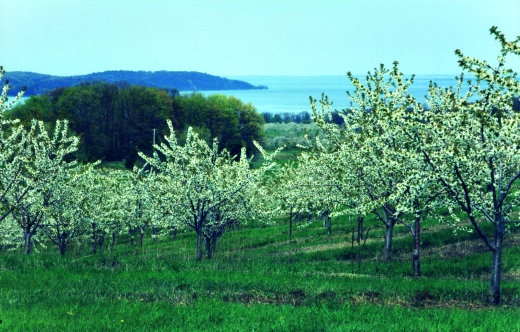Read an excerpt from this article below. You can download the full article by using the link at the end of the excerpt.
The Growing Demand for Land Preservation
As strip malls and subdivisions eat away at undeveloped land, a growing number of communities are taking new steps to save their remaining farmland and open space. See Sidebar, Land Trends. While land use tools such as zoning and cluster development facilitate land preservation, citizens are recognizing that these methods alone may not be enough.
Despite tough economic times, preserving open space is a top spending priority for many communities. Between 1999 and 2002, 544 successful state and local ballot measures generated approximately $16.7 billion in funds for land conservation programs. In 2003, voters approved an additional 99 measures with a total value of $1.3 billion. Overall, between 75 and 80 percent of initiatives and referendums that raise taxes or fees for land conservation have passed.
While there are numerous reasons for preserving open space, the main benefits fall into four general categories: environmental (protecting groundwater, wildlife habitat, etc.); agricultural (preserving farming industries and communities); aesthetic (preserving rural character and scenic beauty); and managing growth.
The specific benefits to any given community depend upon the area’s growth patterns, geography, and economy. Preserving undeveloped land around cities can contain urban growth and direct development towards areas already served by infrastructure. Maintaining floodplains can benefit entire watersheds by reducing flood damage. Preserving woodlots or fallow fields can protect scenic vistas important to tourism. Retaining farmland can help support the local economy by maintaining a viable agricultural base.
In the past, communities have reaped these benefits “free of charge,” thanks to the owners of undeveloped land. Yet as development pressures and land values have increased, the quantity of undeveloped land has shrunk. As a result, communities are recognizing the importance of preserving some farmland and open space.
Preserving Land by Purchasing Development Rights
Purchase of development rights (PDR) programs are one viable approach that state and local governments are using to preserve farmland and open space. See also Sidebar, An Array of Land Conservation Strategies. The following discussion provides an introduction to PDR programs, explains how they work, and discusses some of the issues that commonly arise in their implementation
Purchase of development rights programs provide a way to financially compensate willing landowners for not developing their land. When buying development rights, the community obtains a legal easement, sometimes referred to as a conservation easement, that (usually) permanently restricts development on the land. The landowner, however, still owns the land and can use or sell it for purposes specified in the easement, such as farming, timber production, or hunting.
Since PDR programs are flexible, program administrators can customize purchases of development rights to meet the objectives of both landowners and communities. For example, an easement designed to preserve agricultural resources might allow the landowner to build an additional home or two as long as their placement does not limit the property’s long-term agricultural potential.
Development rights are similar to mineral rights: they represent a portion of the land’s total value. This amount can be estimated by appraisal. The value of development rights is the difference between the fair market value of the land without the easement and its value as restricted by the easement. For example, an 80 acre farm may be worth $10,000 per acre if sold for home sites, but only $2,500 if restricted, by an easement, to agricultural use. This means the parcel’s development value would be $7,500 per acre (or $600,000 for the entire 80 acres) — that would be the cost to purchase the development rights.

PDR programs are becoming increasingly popular because they offer substantial benefits to both communities and landowners. Many agricultural landowners are cash-poor: that is, they have a great deal of equity in land, but little income. By selling only their development rights, owners can convert some of the wealth tied up in their land into cash, without relinquishing ownership of the land or use of its productive capacity.
Landowners may use proceeds from a sale of development rights in any way they choose — purchasing additional acreage, upgrading equipment, paying taxes, or investing for retirement. While proceeds of a PDR sale are taxable, depending upon state tax laws, selling development rights may offer significant tax savings by reducing the taxable value of the land, or by reducing future inheritance taxes.
For communities, PDR programs are a means to manage growth and provide the benefits of open space without the expense of purchasing, maintaining, and policing publicly-owned land. Preserving land can also save communities money in the long run, since development often costs more in public infrastructure and community services than the tax revenue realized by the growth. See Sidebar, Community Costs.
PDR programs recognize that owners of undeveloped land provide valuable amenities to the community. Buying development rights from willing landowners provides a market-driven and compensatory approach to preserving those amenities, and an attractive option or addition to other forms of land management, such as zoning.
End of excerpt
… article continues with sections on: Developing a PDR Program; Paying for the Program; and Dealing With Opposition. Sidebars include two short case studies (Peninsula Township, Michigan, and Dunn, Wisconsin), as well as: State & Local Funding; Community Costs; and An Array of Land Conservation Strategies